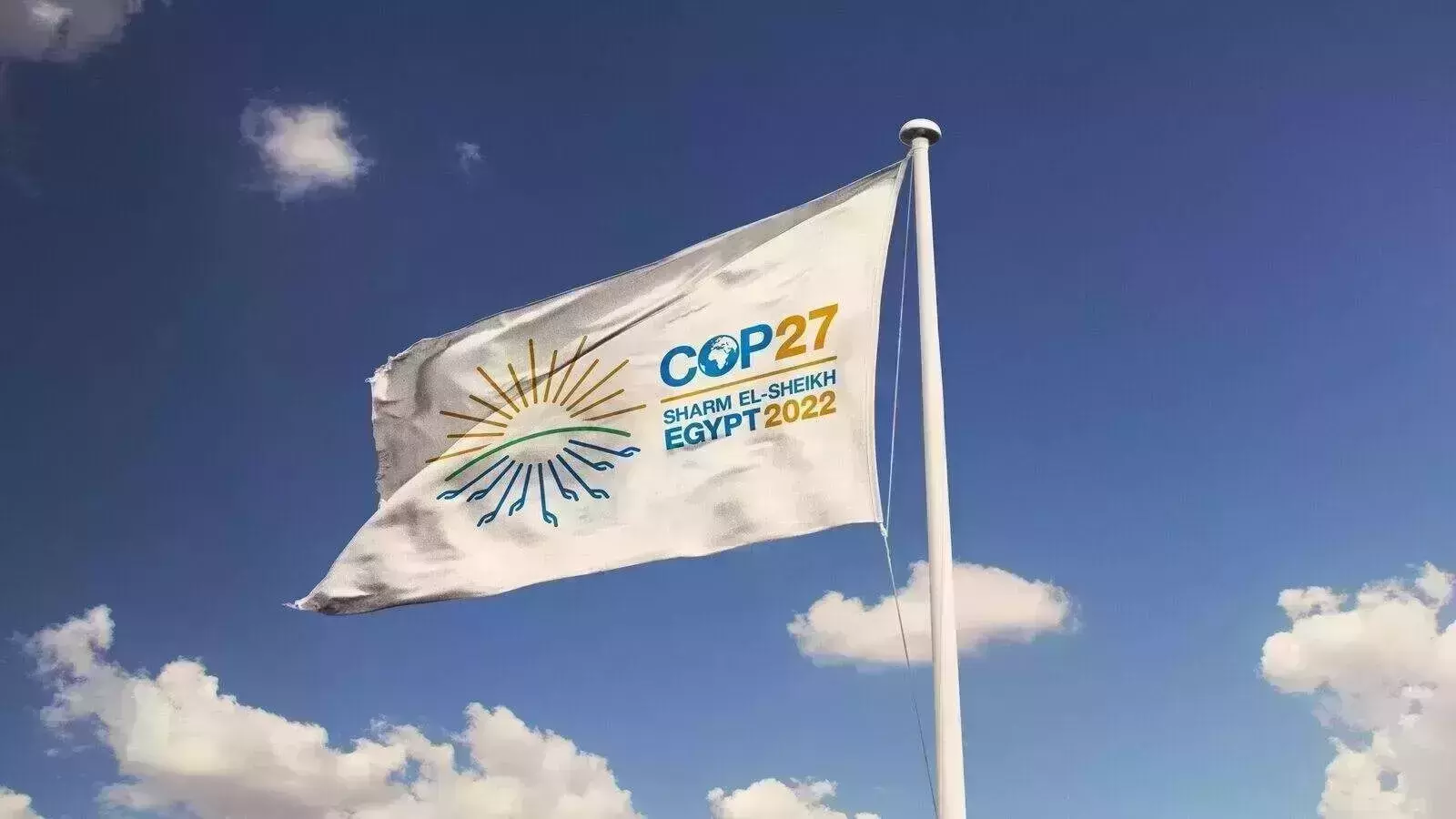
Climate change: Disaster is not far away
text_fieldsThe COP27 climate summit is progressing in Sharm El Sheikh, Egypt. The two-week-long summit will discuss the most urgent problems humanity is currently facing and their solutions. Since 1992, such a conference has been held under the auspices of the UN. But it usually ends up as a farce due to the unilateral stance of the major powers including the United States. However, things have changed slightly since the 2015 Paris conference. This change came about with global warming and climate change becoming more than just theories, but the reality of the planet. In continuation of this, even the superpowers have agreed in principle to reduce the carbon emissions that cause global warming and the slogans of 'green politics' have gained worldwide acceptance. It is in this context that such conferences have received media attention like never before. This time the whole world is looking at Sharm El Sheikh. There is no doubt that declarations made at the end of the summit will determine the fate of this blue planet. Ahead of the summit, various research institutes have submitted reports explaining that the solutions derived at the Paris summit are not adequate to save the earth. The earth is burning; Its creatures are sinking into the flood.
Also read: Small island nations demand climate fund payment from major polluters India, China
One of the high-profile solutions at the Paris summit was to bring global warming to pre-industrial levels. If it goes up, it can rise up to 1.5°C higher than in the pre-industrial era. The main agenda of all subsequent conferences were measures to limit temperature to this level. Economic and technological assistance to countries facing huge environmental threats in the near future was also widely discussed. But the latest reports show that sea and land temperatures are rising to a point far greater than that. This calls for a more drastic solution. A report released yesterday by the World Meteorological Organization (WMO) shows how complicated things have become. It confirms that proposals to reduce carbon emissions exist only on paper. The levels of main greenhouse gases such as carbon dioxide, methane, and nitrous oxide are increasing. Methane is at its highest level in a year. The sea level is also rising steadily. Over two years, sea levels rose by an average of ten millimetres. Glaciers, the largest source of freshwater on Earth, have also declined. Over the past year, 60 cubic kilometres of glaciers have melted in Switzerland alone. While South Asian countries were drenched in rain last year, Africa experienced a severe drought. Within one year, at least two million people on the African continent went hungry due to climate change.
Also read: UN chief slammed companies for greenwashing and "toxic cover-up"
The Centre for Science and Environment (CSE) last week released a study based on the recent 'abnormal weather phenomena' (extreme weather events) reported in India. We know the damage caused by the 2018 flood in Kerala. 18 other states saw floods in that same year. At least four states experienced heavy snowfall. Extreme heat was reported at three places. During this time there was a cold wave in the whole of north India. None of these was mere 'natural disasters'. The scientific world calls this an 'extraordinary weather phenomenon'. According to the CSE report, some 'abnormal weather phenomenon' was reported somewhere in the country on 88% of the days during the nine months from January to September. In these accidents, 2755 people died and 18 lakh hectares of crops were destroyed. The highest number of people died in Madhya Pradesh. Heatwaves, cold waves, torrential rains, and storms wreaked havoc there. A heatwave has been reported this time in 20 states of the country. Earlier, this phenomenon was reported only in Central India, and that too rarely. Now it is spreading elsewhere. It is clear that all of these are a reflection of climate change. Global warming is primarily reflected in the oceans. In fact, the reverberations of the changes happening in the oceans are raining down as floods, heat waves, and avalanches. The new reality of this century is that many land masses are disappearing due to sea levels rising exponentially. It is partly a disaster caused by human hands. The same hands must work to combat the dangers of the climate crisis.
Also read: India to focus on climate finance, definition clarity at COP27 summit























